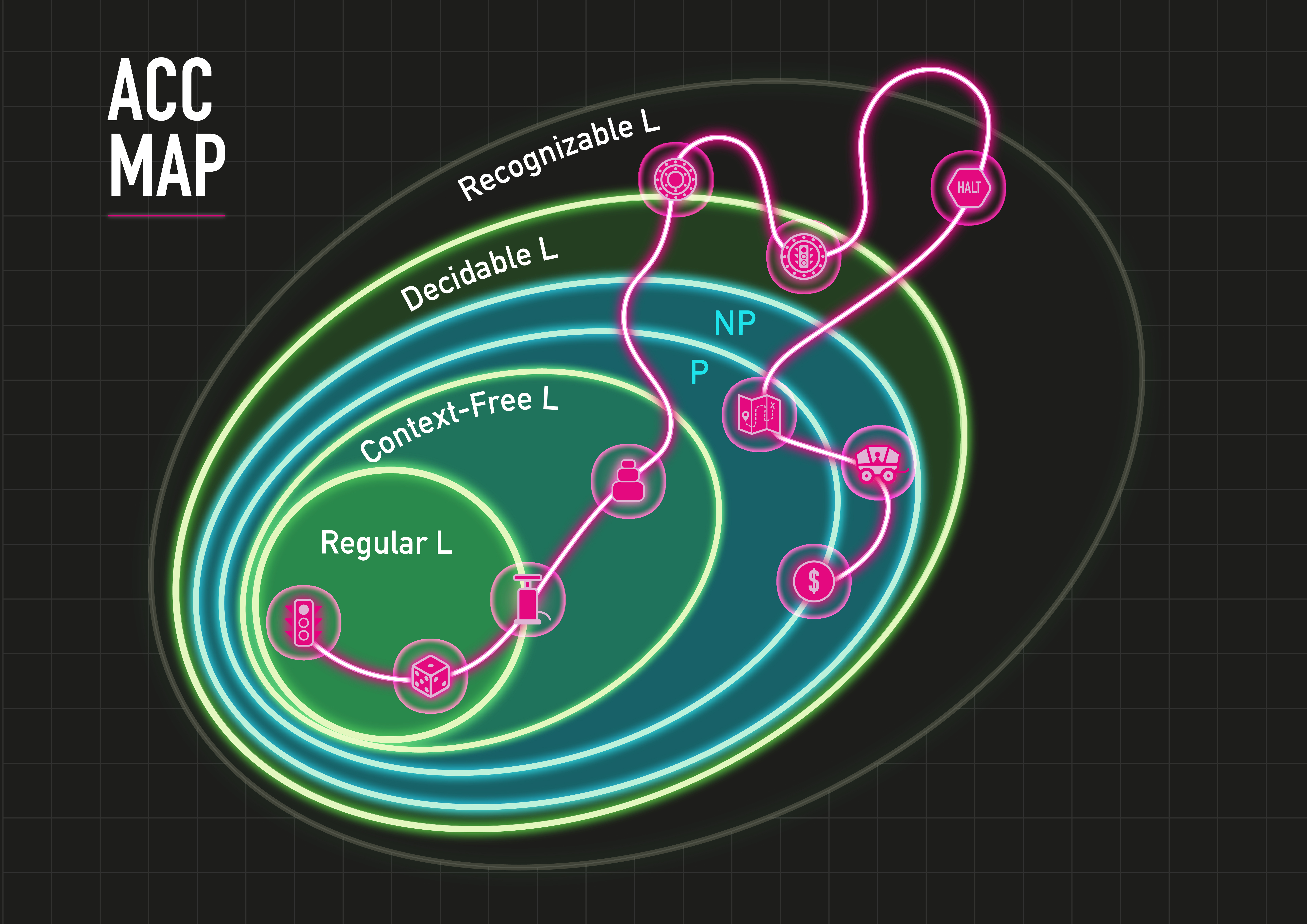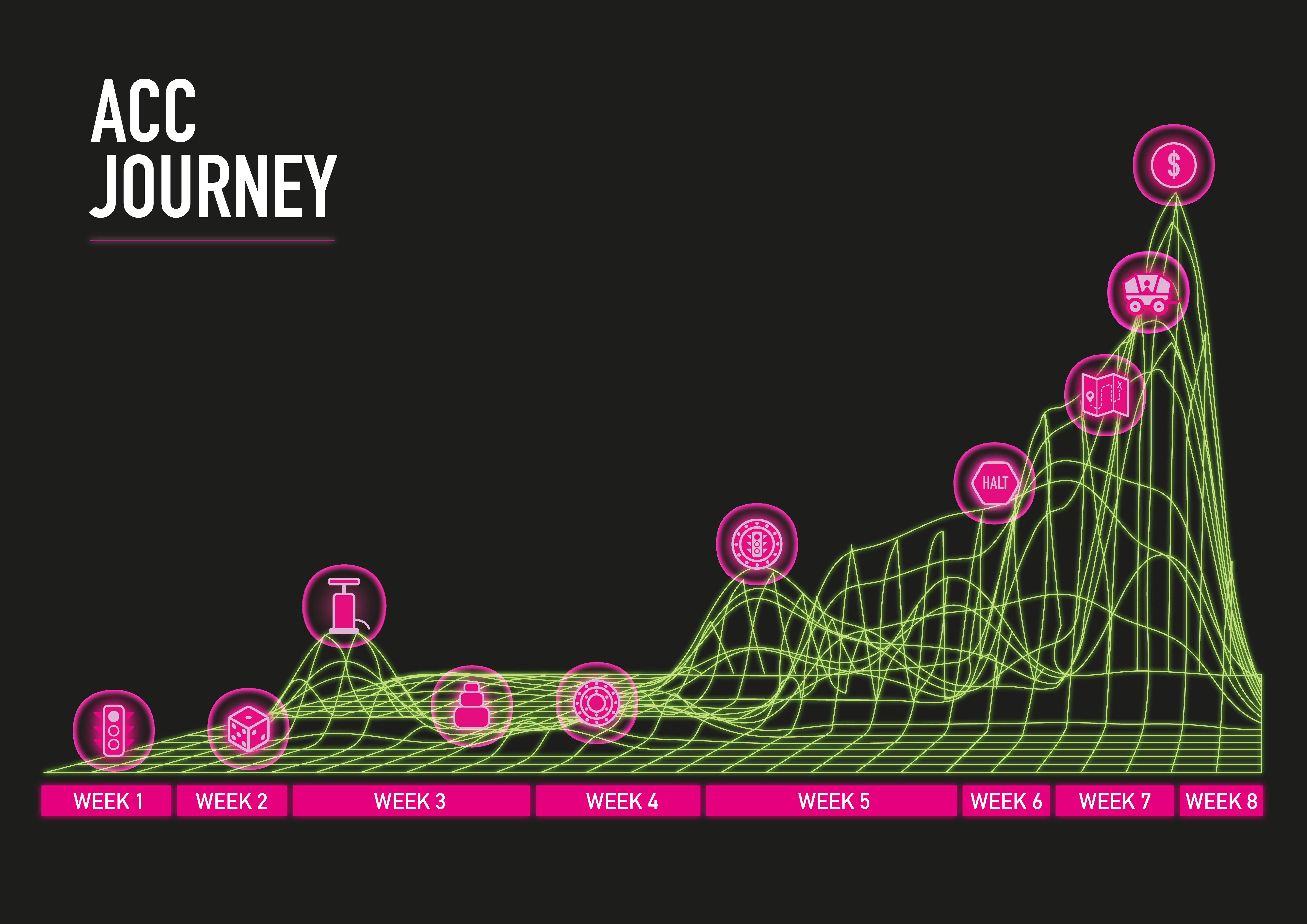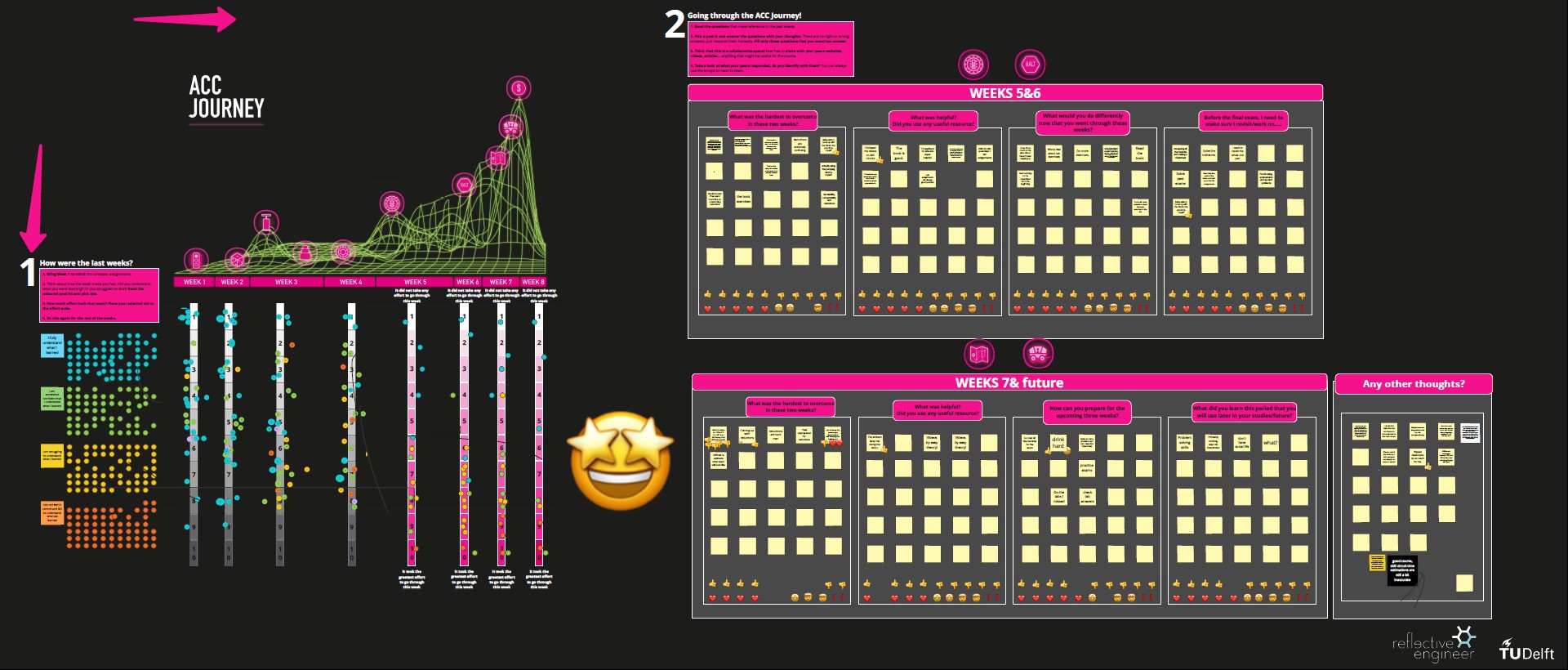Course Mapping
What is it?
The Acing ACC project consisted of the design of a course journey map, developed for the course Automata, Computability and Complexity (ACC) at the faculty of EWI. The project emerged through a co-creation session to look for reflective opportunities with the teachers and students of the course. There, it was concluded that students, on the one hand, underestimated the effort they should put into the course due to its low workload at the beginning of it; and on the other hand, they were getting overwhelmed and confused by how the contents connected to each other, especially at later stages of it.
The ACC journey map depicts two different perspectives to students: The ACC Map, shows the contents of the course and the ACC Journey, its complexity. The intention of this course map is that students can easily find themselves in the process, see their progress, the work ahead and discuss this with others. That way students can feel more connected to the bigger picture of the course.
How does it work?
The ACC Journey shows the different weeks of the course, depicted as stops on a hike up hill, with milestones attached to each stop. The steepness of the hill at different points reflects the difficulty level and workload of the course at that section. Students can use the map to reflect on their own progress compared to the progress of the course and to set learning goals for the coming weeks.
Alongside the maps, two reflective moments were arranged where students could use them to self-assess how they were doing, where they stood, and what was the remaining journey they had. In both moments, the teacher of the course would introduce a Miro Board in which students could evaluate the grip they were having on the course and answer questions such as: “What was the hardest to overcome in these two weeks?” Or “How can you prepare for the upcoming weeks? What resources are helpful?”
Bringing Acting ACC to your classroom
- Are you struggling to connect your students with the bigger picture of your course? Or perhaps your ambition is to align their expectations to the reality of the course? Then, do not hesitate to contact us, we can definitely help you to form such a course map for your course!
- The reflective moments can be helpful for your students to monitor their process in your course. Those can be found in our toolbox. However, ACC is a course where 150 can attend a lecture. Therefore, we learned that the best setup to perform those activities would be smaller groups of students, as then they can fully reflect on all the questions presented, interact with each other’s answers, and share resources.
Implementation for other groups?
- The journey map can be used in other contexts than a university course containing lectures and assignments. Do you for example have an (extra-curricular) project that you run with students and you would like them to gain more insight into the project flow, there is room to adjust the map!
Experiences
Whilst the map itself was helpful for the lecturers to get the overview of the contents of a course (that was a result of combining three others), they let us know that the process to get there was perhaps the most insightful for them. The course co-creation with students unveiled many other insights that were later used for both the maps and reflective moments, but most importantly, to iterate on the existent course set up.
Note. This workshop was in co-creation with teachers from the TU Delft EEMCS faculty, Stefan Hugtenburg and Ivo van Kreveld.


